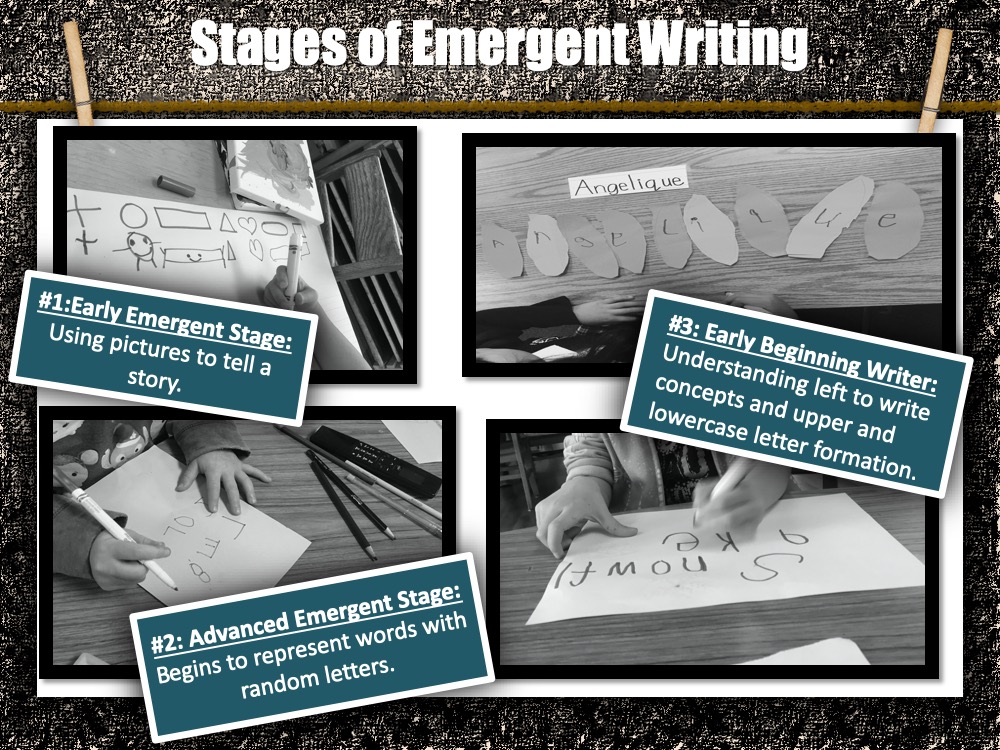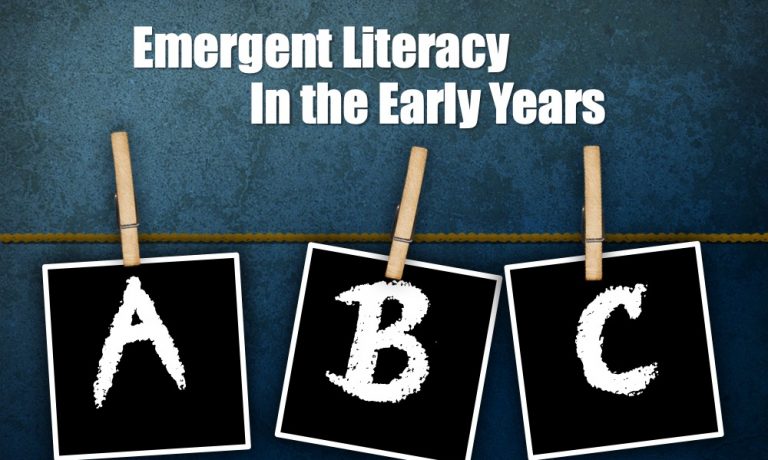What is emergent literacy? The reading or literacy skills and behaviors that develop early and through play rather than direct instruction. These emergent literacy skills serve as the base for later competence and proficiency. They are the building blocks that children need to learn to develop higher-level skills in order to become proficient readers.

Emergent Literacy Skills
Emergent literacy shows up in the form of phonemic awareness. This is not phonics or the understanding of printed letters, but it is actually auditory based and does not involve words in print. While phonics instruction offers activities that support the written aspect of words, we must realize that with only twenty-six letters of the alphabet we can effectively create over forty phonemes, and in turn, need to support early learners with specific phonemic awareness activities that will promote eventual reading success.

Phonics is the systematic relationship between letters and sounds. And the connection between comprehension, reading, and writing all falls under the larger literacy umbrella. As a result, children need to practice their emergent writing skills to scaffold (or practice) their newly found reading skills. Left to right tracking, top to bottom, and the relationships between letters, words and sentences.

Young children practice their skills through emergent writing as well. Scribbles, pretend writing, and playing with shapes and lines are all part of the process. Families can help further develop these skills by allowing and encouraging children to practice strengthening fine motor skills.
- Using playdoh to roll snakes and balls
- Holding forks and spoons
- Painting on vertical surfaces
- Using chalk in the driveway
- Playing with tweezers and tongs to pick up items

The California Standards for Early Literacy are broken down into 7 main parts:
- distinguishing writing form drawing
- Writing letter-like shapes
- Concepts of print
- Using complex vocabulary
- Recognizing that letters have sounds
- Recognizing common printed words such as their own name
- Print has meaning


At Home Literacy
At home literacy activities promote emergent literacy skills in the classroom. Activities such as reading environmental print, making lists for birthdays, holidays, and groceries, etc. Rhyme and syllable counting also help children decode language.
Children are ready to start school and formal learning when parents, caregivers, and families support language development. When they make up songs, stories, and jokes they are helping those emergent literacy skills to grow and develop.

You can grab your Play Based Learning Planner here.
Until next time, keep learning to play the nature way-




6 Responses
Thank you for breaking this down step-by-step. I know a lot of parents will find this useful as well. If you don’t have a teaching background, it’s hard to remember all the things you need for a strong reading foundation.
We are all too young when we learn what writing is to remember how we learned what writing is. This post does a great job of breaking down the steps to something we all experienced but don’t remember.
Thank you for the in-depth information for literacy in the classroom at home. Important information for the new early years parent ☕️
Literacy at home is so important for early language development. Thank you for including that information and ideas for parents!
This is great information! I’ve been working on some Outschool classes for Pre-K Spanish and am relying heavily on auditory practice and pictures but don’t know whether to show the written words or not.